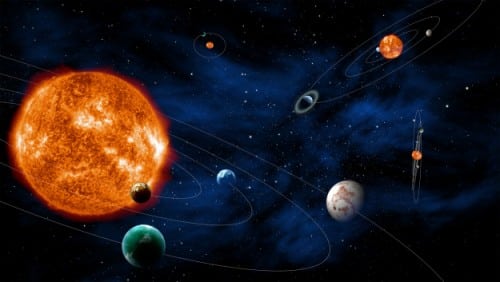Plato will monitor relatively close planets and look for regular small dips in the brightness of planets due to planets passing in front of them, when they temporarily block a small portion of the star's light.

The European Space Agency will launch a space telescope that will search for planets outside the solar system. Development will begin soon and the spacecraft will be launched in 2024.
The project, PLATO (Planetary Transits and Oscillations of stars) was chosen by the Committee for Scientific Programs of the European Space Agency as part of the 'Cosmic Vision' program for the years 2015-2025.
The spacecraft is supposed to answer two questions that are part of the goals of the cosmic vision - what are the conditions for the formation of planets and the appearance of life, and how solar systems work.
Plato will monitor relatively close planets and look for regular small dips in the brightness of planets due to planets passing in front of them, when they temporarily block a small portion of the star's light.
Plato will contain 34 separate telescopes and cameras and will search for planets orbiting about a million stars across half the sky. The spacecraft will also investigate the activity of the stars and will enable an accurate characterization of the host suns of each of the planets that will be discovered, including the mass, radius and age of the star.
Together with measurements of the radial velocity of the stars in ground observations, the PLATO measurement will also allow the calculation of the mass and radius of the planets, thus locating their density and providing an indication of their composition.
The spacecraft will identify and explore thousands of planetary systems, with the aim of discovering and characterizing Earth-like planets as well as super-Earths that are in the habitable zones of their systems - the distance from the star that allows water to exist in a liquid state.
"Plato, which has the unique features for discovering planets the size of the Earth, will be built following the experience gained from a number of European spacecraft, including CoRot and Cheops," says Alvaro Jimenez, Director of Scientific and Robotic Missions at the European Space Agency.
Its discovery will allow us to place the architecture of our solar system in the context of other solar systems.
The other spacecraft candidates for this operation, called M3, are: EChO (the Exoplanet CHAracterisation Observatory), LOFT (the Large Observatory For x-ray Timing), MarcoPolo-R (to collect and return a sample from a near-Earth asteroid) and STE- Quest (Space-Time Explorer and Quantum Equivalence principle Space Test).
Plato will join the Solar Orbiter and Euclid, whose construction was approved in 2014, as the first mission within the M series. Solar Orbiter will be launched in 2017 and will explore the solar wind from a distance of less than 50 million kilometers, and Euclid, which will be launched in 2020, will focus on dark energy, dark matter and the structure of the universe.
For information on the European Space Agency website
Today, NASA announced the discovery of 715 planets from the legacy of the Kepler space telescope.
